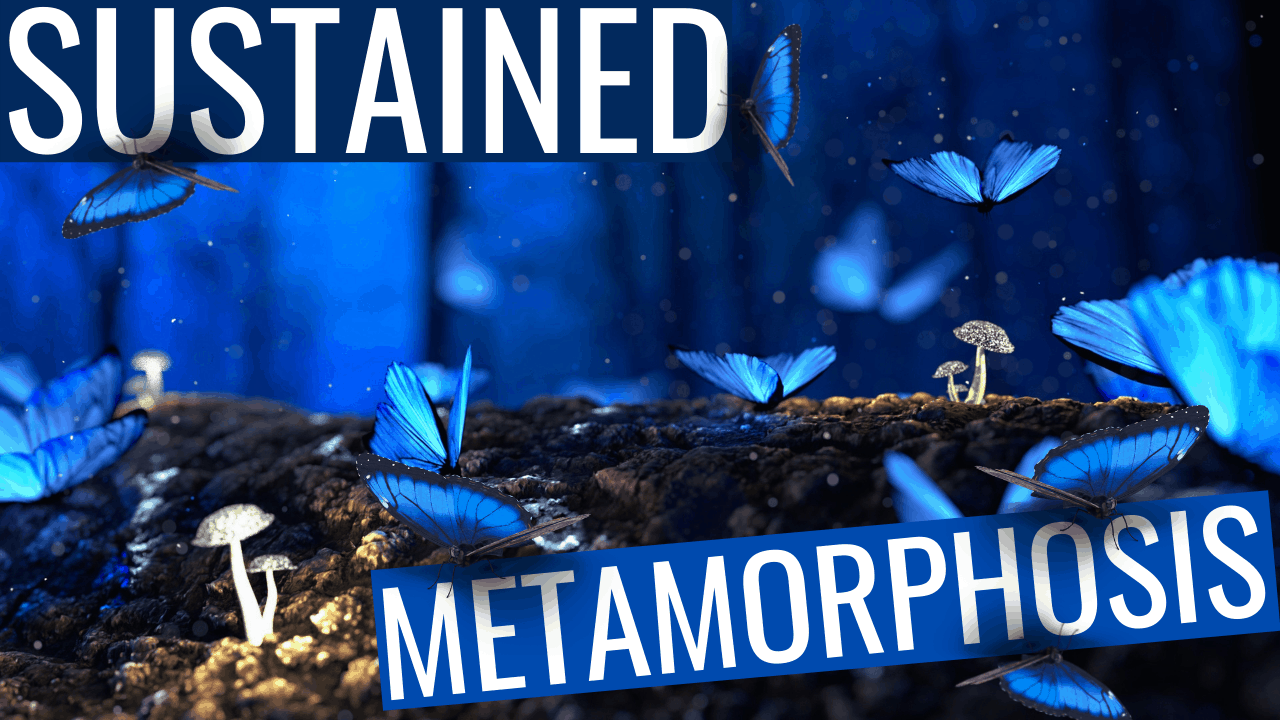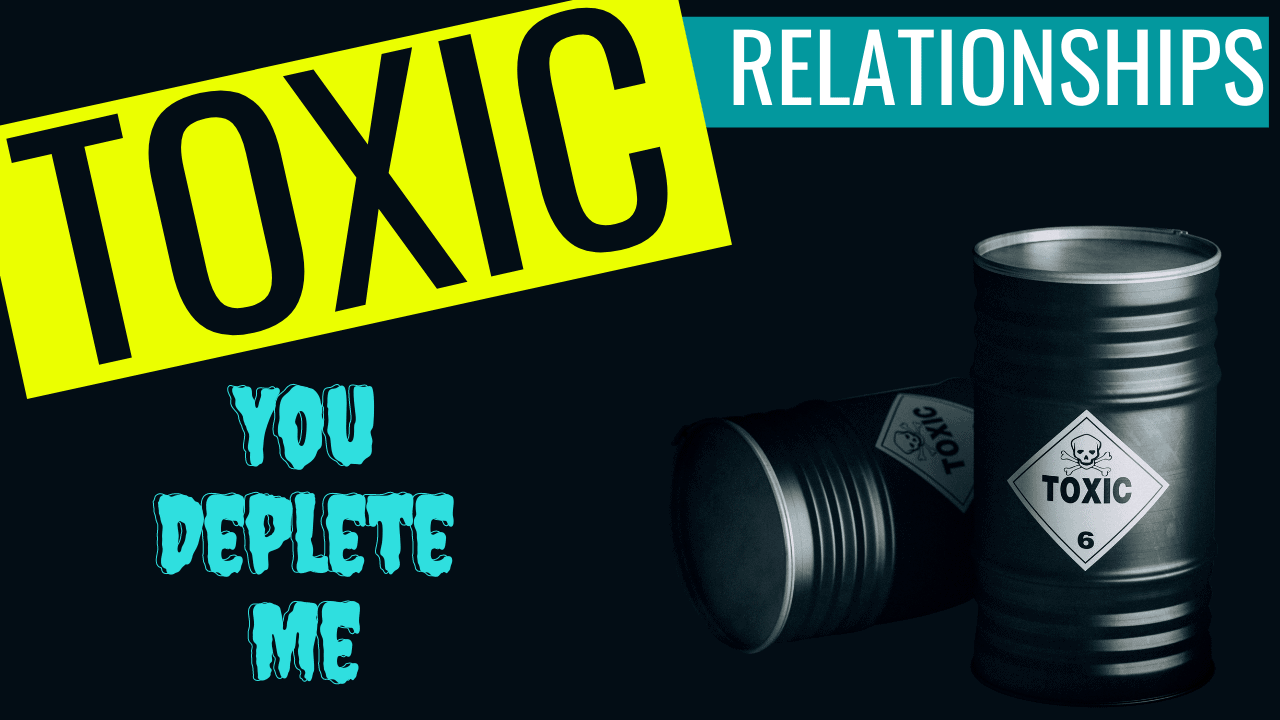Every organisation covets that “it” factor – that enthusiasm and passion that lights up employees, delights customers, and shines for investors. It’s not just the warmer fleece, the faster engine, the better-tasting ice cream, or even the first-to-market technology. What strengthens your organisation’s resilience, fuels transformation, and creates outstanding value is purpose – when it’s genuine. Purpose answers the question, “What would the world lose if your organisation vanished tomorrow?” It defines your company’s core reason for being and its resulting positive impact on the world.
There is a reason why purpose is so attractive. Winning organisations are driven by a higher purpose. They reach higher for it and achieve more because of it. This leaves their competitors dazed, wondering where they can find some of that magic and how they can sprinkle it on everything. If that’s your attitude and you are looking at your competitors – thinking purpose is like magic glitter that can be sprinkled into your mix – prepare to fail. A superficial approach to purpose does not work. It will not sustain your organisation through any significant change. In fact, adopting a superficial approach to purpose can do considerable harm, opening up your brand to accusations of inauthenticity and fakery. This quickly turns customers off and may even drive them away completely. Poor outcomes swiftly follow when purpose is a patch job.
Organisations with a genuine, higher purpose radiate authenticity and do well by doing good. Customers, suppliers, partners, and investors easily recognise the attractive value proposition and want to be involved. The leadership team allocates resources with purpose in mind, and employees make purpose a part of their decision making as a matter of course. Building these dynamics is not easy. It requires leaders to embed purpose throughout the enterprise, connecting with the organisation’s “superpower” – its unique ability to create value. Today, leaders are facing a complex, uncertain, and rapidly changing world, including but not limited to major social, environmental, and ethical challenges. Dealing with these problems and opportunities requires new capabilities beyond classical management and linear mechanistic thinking.
“The real goal of what we’re doing is to have a positive impact on the world.”
– Ed Catmull
5 Ps to Making Purpose Real
It’s relatively easy to develop a mission statement or kick start a purpose initiative. Most organisations have sought to define their purpose at some point in their history, and many know the importance of embedding purpose in everything they do. However, leaders also know this is not an easy task. Perhaps that’s why companies announce purpose changes so often. 70 per cent of transformations fail to reach their stated goals, in large measure because they fail to change the mindsets and behaviours of employees. Purpose must be systemic and rational as well as emotional. Purpose must resonate with your people and inform their decision making. Five critical elements to get right are:
1. Products and Portfolio Strategy
These are the products and services your organisation provides, and the “where to play” and “how to play” choices you make to best serve your customers. Make sure that your business portfolio aligns with your organisation’s purpose. Fight the tendency to approach purpose with a “this is the hand we’ve been dealt” resignation. Of course your company’s endowment matters, but you have greater freedom than you might expect to choose what your organisation does and how it can make a positive difference.
2. People and Culture
Purpose begins with human beings. Your employees and all of your stakeholders are your sources of strength and a hard check against authenticity. Employee sentiment is often the single greatest force undermining insincere claims of purpose. The quest for meaning is part of the human condition and is embraced by purposeful organisations. Employees at purpose-driven companies are four times more engaged at work.
3. Processes and Systems
The capacity to think systemically – to understand the dynamics, relationships, and context inherent in all forms of life – is more relevant today than ever. The biggest inhibitor to our transformation is our disconnection with life/nature. Nature is a constant state of transformation, for real. Everything naturally transforms through the cycles of life. We often strategise, envision, innovate and explore new ways of operating in the hope that they help us transform towards a more sustainable future for society, the economy, and the environment. When these intentions originate from a disconnected perception of life, we innovate our way to incomplete solutions, based on incomplete understandings of life. We seek to enforce change through dramatic intervention as opposed to evolutionary iteration. Our key challenge is to shift from an economic system based on the notion of unlimited growth to one that is both ecologically sustainable and socially just.
4. Performance Metrics
Purpose can and should be measured rigorously. In practice, this means identifying the key metrics that tie to your company’s purpose, tracking them over time, and incenting your people to meet these targets. What gets measured gets managed. The converse is perhaps even more apt: what you seek to manage must be measured.
5. Positions and Engagement
With an increased focus on global sustainability, we are seeing a rapid shift in how businesses operate. What’s true within your organisation must be consistent beyond it. The next step in the evolution of business is to build a business model that also meets the entrepreneur’s personal goals, passions, and values — regardless of the industry and without compromising one or the other. When purpose is hardwired, your organisation’s positions, communications, and external engagement become logical extensions of your business model. Purpose eliminates the gap between walk and talk.
“Adding wings to caterpillars does not create butterflies, it creates awkward and dysfunctional caterpillars. Butterflies are created through transformation.”
– Stephanie Marshall
Change Before You Have To
As the 2010-2020 decade quickly becomes a distant memory, our hindsight reveals that it was the beginning of the VUCA Age – volatile, uncertain, complex, and ambiguous times of disruptive innovations and wicked systemic challenges becoming the ‘new norm’. Leadership research shows a widening ‘complexity gap’. The old mechanistic logic we used to lead and operate by is no longer fit-for-purpose. Our status quo leadership consciousness is left wanting, unable to deal with the systemic challenges organisations now face. Those without higher purpose are lost and confused.
Increasingly, business is shifting from a narrow focus on shareholder value to a wider perspective of stakeholder value. Corporate responsibility is shifting from narrow organisational factors to wider systemic value. The widespread adoption of the UN Sustainable Development Goals, integrated reporting initiatives such as Future-Fit Business Benchmark, and the shift towards the Circular Economy exemplify a sea-change in business. It is the Law of Nature – adapt or die. You are here at the beginning; there is plenty of work to do for leadership and operational practices to be truly future-fit. The challenges we face in this moment are seismically larger than those of the last decade. Yet, there is increasing acceptance amongst leaders of a ‘new norm’ demanding a new way of leading and operating. Time is not on our side. If world-leading scientists’ latest findings are correct, then the time to act is now, not in 5 years or 10 years, but right now. Our individual and collective future depends on the steps we take today throughout 2022. These are critical times.
“There is nothing in a caterpillar that tells you it’s going to be a butterfly.”
– Buckminster Fuller
Wisdom Seeds
Amid this time of upheaval and systemic challenge, wisdom-seeds of a new way are starting to sprout deep within us and also within our social systems. All transformation starts with a rupturing of the status quo. Breakthrough is preceded by breakdown. A civilisation is dying before our very eyes and a new one is being born. At the heart of this systemic shift is a transformation in worldview upon which our beliefs are founded – a shift from a mechanistic worldview of separation to a participatory worldview of interconnection. The dying, yet still dominant worldview today, perceives life as a purposeless random affair. Separate individuals and competing organisations struggle for survival in a dog-eat-dog world. The lens of perception through which we perceive ourselves and the world around us is a narrowed-down lens. It objectifies the world into separate bits and deterministic push-pull relationships. It assumes life is like a clockwork machine that can be understood by examining the parts.
The new worldview being born dares us to open up this narrowed-down lens of perception, so we can perceive more of how life really is. In this way, we enliven our empathic connection with all of life. This opening-up to more of reality is a threshold-crossing where the old sense of self starts to die, and a new sense of self is born. It’s a psychological death of letting-go that welcomes a richer experience of life. It really is as radical as the metamorphosis of the caterpillar to the butterfly. To die and be reborn is the task of our time: individually and collectively. The journey of Crossing the Threshold lies at the heart of all world myths and wisdom traditions. It is the journey of overcoming inner challenges amid a world of opposing tensions.
“How does one become butterfly?’ Pooh asked pensively.
“You must want to fly so much that you‘re willing to give up being a caterpillar,” Piglet replied.
“You mean you die?” asked Pooh.
“Yes and no,” he answered. “What looks like you will die but, but what’s really you will live on.”
– A. A. Milne
Theory U
To apply a contemporary framing to Crossing the Threshold, we can draw upon MIT’s leadership specialist Otto Scharmer and his Theory U, which draws from ancient wisdom tradition. We journey down the U by letting-go and opening up our mind, opening up our heart, and opening up our will, so we can connect to Source at the bottom of the U. From this place of inner coherence and connection, we can start to engage in right thought, right relation, and right action. A new, richer, more powerful perception unfolds, and our orientation of self-other-world transforms.
We cannot expect ourselves to come up with real and lasting solutions to today’s challenges without first knowing how to let go of what we think we can control and connect to Source. Yet we are all too consumed with the dying paradigm that objectifies the world with machine thinking – the very thing that skews our capacity to connect to Source. In this way, brilliant innovations like Agile, for instance, get mechanised and superficialised into outer ‘doing’ techno-fixes and ‘hot-desking’. The inner dimension of how we more effectively open up, collaborate and engage systemically, is often overlooked. This results in expensive, well-intended failures to truly transform ourselves and our organisations in any deep and lasting way.
“The greatest danger in times of turbulence is not the turbulence
– it is to act with yesterday’s logic.”
– Peter Drucker
The Decade of Transformation
Prediction : At least 50% of all organisations around today will be dead or bought-out by the end of this decade. This is the Decade of Transformation, so how do we ensure our organisations survive and thrive and sustained metamorphosis? Transformation towards the future of business requires DEDICATION.
D for Diversity
Diversity is a necessary condition for business to thrive in volatile times. The breadth of future challenges can only be met through a diversity of thought and opinions. Globalisation interweaves with localisation; Embracing individuality goes hand-in-hand with maintaining the integrity and performance of the team, organisation, and wider business ecosystem. Differences are not normalised away but celebrated for what they can contribute to a redesigning for resilience. The shift is from mono-cultural, singular, mass-orientated approaches to encouraging and incorporating diversity across the business.
E for Emergence
The ‘new norm’ of turbulence in business requires a shift in conventional management thinking from over-reliance on top-down, hierarchical, risk-based approaches to managing within complexity. Managing within complexity juggles and combines varying styles and techniques. It encourages bottom-up emergence to flourish; establishing an all-pervasive values-led work ethic while guiding and coaching. Emergence has a self-generating quality, where individual parts of an ecosystem interact to provide an unfolding of events that are self-fuelled by the actions and interactions of the parts.
D for Decentralised
The linear, hierarchical, reductionist approaches to business are shifting to a more networked, emergent model. In this way, the centralised, top-down approaches are giving way to more decentralised, autonomous, interconnected, locally-attuned ways of behaving: less bureaucracy more empowerment.
I for Innovation
Increased market volatility brings with it the need to create, develop and adapt new products and services under time-pressured conditions. Innovation is a critical success factor for the future. Those able to innovate effectively, time and again, will win out over organisations that struggle to adapt. The business of the future builds a culture that facilitates, unlocks and supports people’s creative potential. It encourages people to overcome fears and inhibitions where the work dynamic is of constant evolution. In these environments, failure is not criticised but embraced for what it is – an essential part of learning, adapting, and evolving.
C for Collaboration
We are witnessing a shift in mentality and behaviour from the past approach of “dog eat dog” competition between business units, and individuals to the future approach of collaboration across multi-functional teams. Interconnectedness rather than separateness, collaboration rather than competition is the future of business. Collaboration encourages the transcending of traditional boundaries and artificial separations in business; it interconnects to encourage co-creativity, a sense of belonging to one team effort. A collaborative team is more willing to embrace change because they will have contributed to it.
A for Authenticity
Effective personal and organisational transformation is about being authentic and true to your values. The authentic self and the authentic organisation go hand in hand. Those that learn to follow their true path will be able to adapt themselves as well as the organisations and communities within which they operate. Those that remain incomplete and false will find it increasingly difficult to get away with benefiting themselves at the expense of others. Reconnecting with our authentic human nature and the natural world around us is one of the most joyous and amazing actions we can undertake – on our individual and collective journey towards sustainable living, working, doing, and being.
T for Trust
Being able to trust the people, organisational culture and stakeholder community you operate in is an important ingredient for success. The transformation towards the future of business requires embracing new ways beyond existing comfort zones, while working with others with collaborative and emergent approaches. Courage and co-creation need trust to thrive.
I for Intuition
The rational mind struggles to cope with the increasing complexity and volatility we find in business today. This often leads to increased stress and reduced performance, but intuition can cope quite effortlessly. Reconnecting with our intuition by creating silence and space for our minds to rebalance both left and right brain hemispheres is fundamental for realising transformational change in business and beyond. An important part of reconnecting is the need for reflection in order to continually deepen our intuition and intention.
O for Openness
The more we open up to our environment, the more we tune into the interconnected nature of life, sensing and responding in the most optimal way. Likewise, the more we recognise the need for openness in our operations, the more we can positively adapt. Sharing knowledge freely is often contrary to our prevalent business mindset. Allowing ourselves and organisations to be more open to sharing is an important part of the transformational journey.
N for Nature
The future is business inspired by nature. Connecting with nature can bring benefits of improved creativity, serenity, centeredness, and well-being. Operating in harmony with nature is what sustainable business is all about – not just seeking to ‘do less bad’ but creating the conditions conducive to doing more good. Holistic business value is simply good business sense. The transformational journey is about being inspired by nature, being connected to nature, and being in harmony with nature.
Through DEDICATION the organisation and leader has achieved a redesigning for resilience.
“There is nothing more difficult to take in hand, more perilous to conduct, or more uncertain in its success, than to take the lead in the introduction of a new order of things.”
– Niccolo Machiavelli
3 Do-or-Die Signs for Business Transformation
Too many business leaders ignore these warning signs. Ignore them today and risk getting left behind – or worse! The ability to identify and understand when your organisation is in need of a change is a sign of effective business leadership. It’s a clear indication you have the foresight necessary to more effectively reach your long-term business goals. Here are three warning signs something needs to change.
1. Your current business practices are inefficient
There aren’t many things more painful to watch than someone double or triple handling something they really only needed to touch once. The question is, who is paying attention? Every so often, evaluate just how efficient your current business practices are and determine where change is needed. Most often, when a business is lacking efficiency, it isn’t effectively matching their teams’ strengths with the necessary systems to achieve the tasks at hand. Reorganising can be a wonderful method for creating the illusion of progress while producing confusion, inefficiency, and demoralisation. Be ruthless in cutting out waste, streamlining structures and improving efficiency. The key to being insanely efficient is minimising unproductive behaviour.
2. You are product-focused not customer-focused
Traditionally, businesses have followed a product-centric and vendor-led way of handling customer engagements. Simply put, a customer was seen as a one-off encounter, and the end goal for most businesses was simply to make a sale. However, this mindset is increasingly outdated in the modern world, where businesses instead aim to build long-term relationships with customers based around transparency and trust. As such, any successful transformation needs to put customers at the forefront in order to be truly meaningful. “Random acts of digital” that offer no significant benefits or improvements are a waste of time and money. In the age of the customer, executives don’t decide how customer-centric their companies are – customers do.
3. Missing pieces of your customer (or employee) experience
Once you have a customer-focused mindset, you need to be sure that your customer experience is meeting consumer’s needs and expectations. The modern consumer can be demanding, insisting that brands deliver on all of their promises immediately while offering a seamless experience across every relevant channel. As such, a big part of any customer-centric business transformation effort is going to be identifying the bumps in the road, the touchpoints that either aren’t being addressed or need to be improved upon. Additionally, companies need to invest just as much time into the employee experience as the customer experience. The internal customer experience determines the external customer experience.
“What would a butterfly say, on looking in the mirror? It would say, ‘The adventure was worth it!”
– Manali Oak
Your Wings Are There, You Just Have to Use Them
When you find yourself cocooned in isolation and despair and cannot find your way out of the darkness, remember that this is similar to the place where caterpillars go to grow their wings. The death/rebirth metamorphosis can seem scary and even painful for the ‘ego’ to comprehend. Yesterday’s consciousness cannot fathom it – it’s too ensnared in mechanistic learning outcomes to understand the need for deep-work. Yet, without it, we will not transform. It is an essential part of our capacity to evolve as human beings during these critical times. Metamorphoses happen at scale in times of crisis – thrust upon us by external situations, leading to personal breakdown. It does not have to be this way. There are tried-and-tested advanced leadership practices that facilitate this process in ways in proactive ways that enable people to consciously ‘cross the threshold’. Once on the other side of the threshold, we become true leaders delivering life-affirming futures for one and all. We become the conscious leaders, this world now calls us to be.
“The butterfly said to the sun, ‘They can’t stop talking about my transformation. I can only do it once in my lifetime. If only they knew, they can do it at any time and in countless ways.”
– Dodinsky






